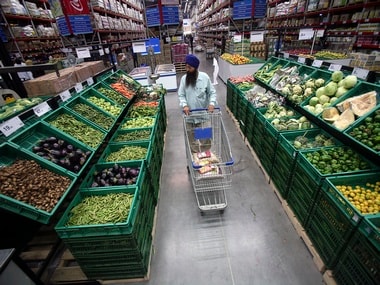The worlds third-largest retailer Tesco is taking full advantage of Wal-Mart’s recent split with the Bharti Group to move closer to entering India’s $450 retail market.
Even though the UK-based retailer has clarified that it will not invest in India unless the government provides more clarity on India’s sourcing norms, it has launched a corner convenience store format modeled on Tesco Express in Pune, according to a report in the Economic Times . Globally,Tesco runs more than 1,500 convenience stores averaging 2,200 sq ft in small shopping precincts in UK residential areas and the countryside.
[caption id=“attachment_636372” align=“alignleft” width=“380”]
 Reuters[/caption]
Reuters[/caption]
Tesco entered the Indian market in 2008via a tie up with Trent, the Tata group retail arm, to develop the latter’s discount hypermarket format but have plans to carry forward the partnership to front-end retail as well. However, sincemulti-brand retailers with foreign investment are required to source 30 percent of goods from small-and-medium enterprises locally, and invest $100 million in the first three years of setting up shop, the retail giant has far treaded cautiously in India.
Tesco’s wholesale business supplies merchandise to Star Bazaar, the hypermarkets of Trentas the cash-and-carry business, also known as wholesale outlets, is the only retail format where 100 percent FDI is allowed. The arrangement works like this:Tesco will receive a fee for its services. It can draw from the British chain’s vast retail expertise and technical capability to support Tatas big box format Star Bazaar.
However, the format of the new store is completely different. “The first Star Daily outlet, opened in Pune last week, is just about 1,800 sq ft in size and stocks mainly fresh foods, groceries and essential items,” the report said. It is also open for 15 hours, starting at 7 am in the morning.
Impact Shorts
More ShortsStar Bazaar outlets on the other hand are much bigger, and are sized anywhere between 40,000 sq ft and 80,000 sq ft. They sell food, grocery and apparel to consumer durables.The undeclared presence of the global supermarket is seen in product variety, (imported Tesco products), the use of Tesco’s tagline - “Helping you spend less” - and the display of products. B
ut thecompany has still found it difficult to replicate the success of its global models here, since its private labels, which account for 40-45 percent of total sales in the UK, make up for only a small fraction of Star Bazaar’s sales.
Globally though Tesco has thousands of stock keeping units in private labels in almost all conceivable categories. Perhaps the new neighborhood model will help this joint venture generatehigh sales which is the key to success in this space.
)